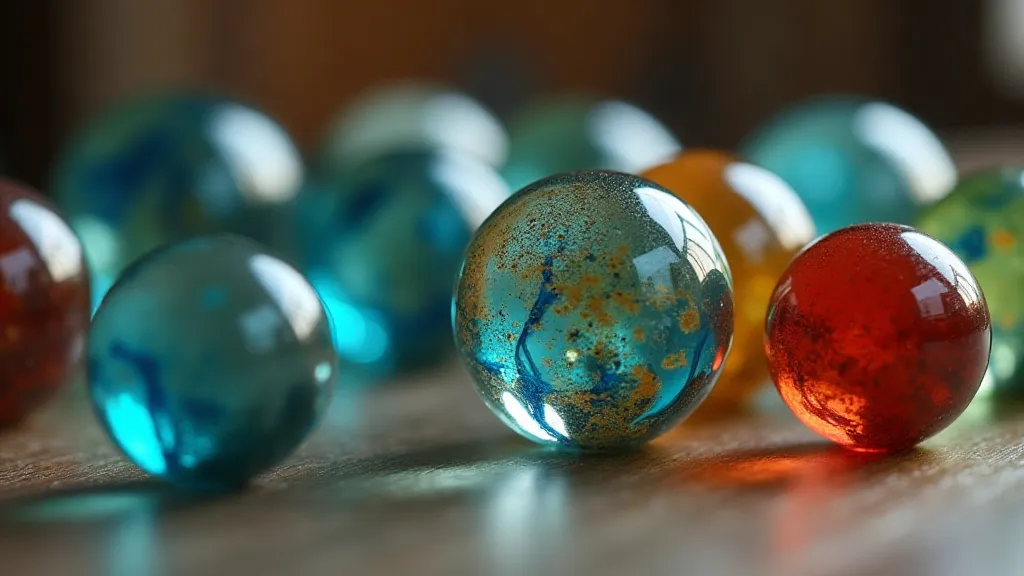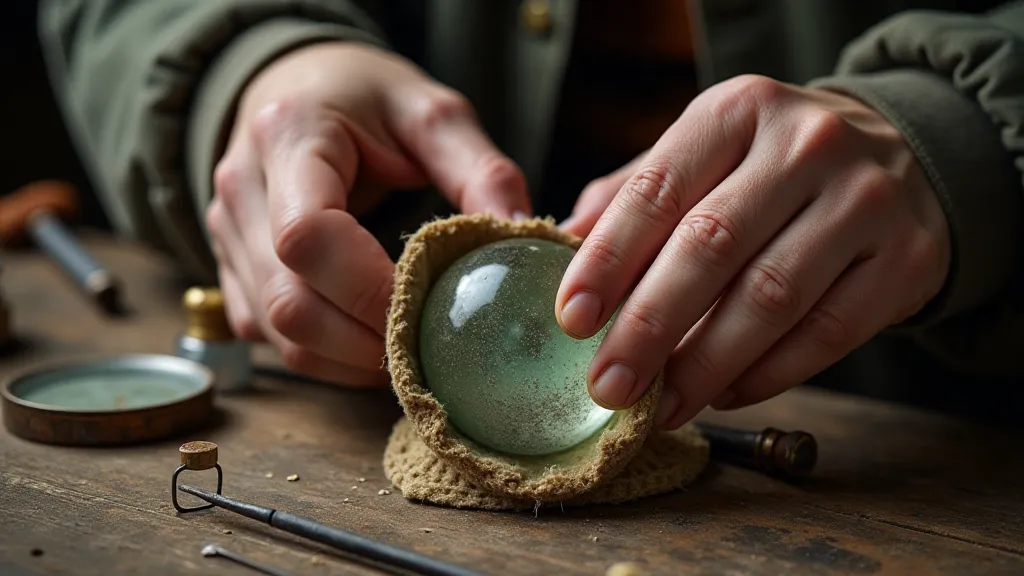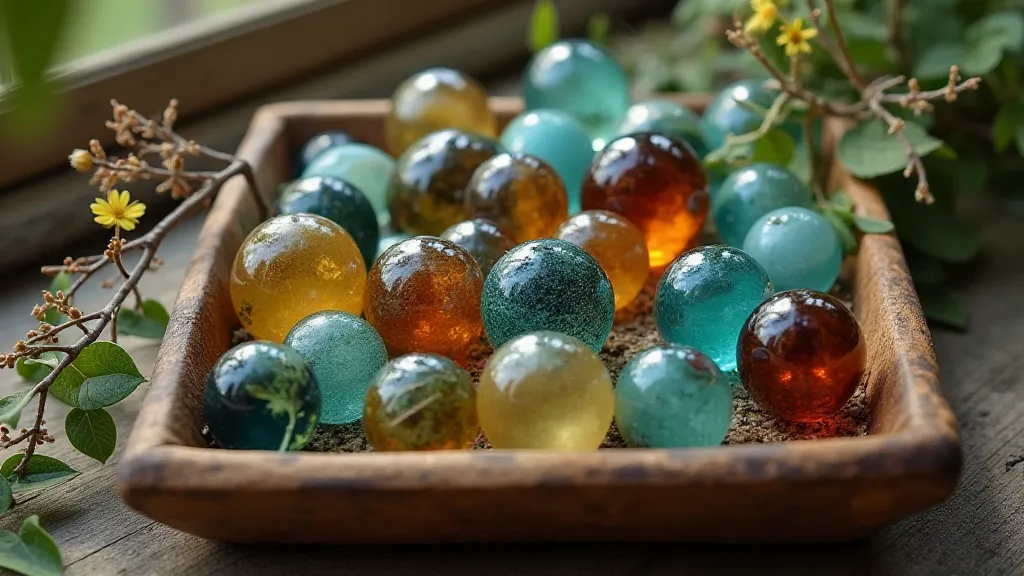The Ghost in the Glass: Folklore and Superstition Surrounding Marbles
The clatter of marbles on pavement, the satisfying weight in a child's palm, the gleam of glass reflecting sunlight – these are tactile memories for many. But beyond the simple joy of play, antique marbles hold a deeper resonance, interwoven with centuries of folklore, superstition, and quiet magic. As marble collectors, we’re not just amassing beautiful objects; we’re custodians of narratives, echoes of beliefs passed down through generations. This article delves into the curious world of marble lore – exploring the stories, curses, and superstitions that cling to these diminutive treasures.
My own fascination began unexpectedly. As a child, I found a small, milky-white marble amongst my grandfather’s tools. He wasn’t a collector, but he told me it was “a lucky stone” his own father had given him, a talisman against misfortune. It wasn't the marble itself that captivated me, but the weight of that story, the palpable sense of protection it seemed to offer. It ignited a lifelong pursuit – not just to collect these objects, but to understand the beliefs that elevated them beyond mere toys.
Marbles as Talismans: Luck, Protection, and Healing
Across cultures and eras, marbles—or objects resembling them—have served as more than just playthings. Their spherical shape, often associated with wholeness and perfection, lends itself easily to symbolic meaning. In some European folk traditions, small, round stones were believed to hold the captured essence of spirits, both benevolent and malevolent. Carrying such a stone offered protection, or, if you were brave (or foolhardy) enough, an attempt to harness its power.
Amongst children, marbles often took on personal significance. A particularly beautiful swirl, a striking color combination, could be imbued with a child's own hopes and fears. A chipped marble might be a reminder of a lost game, but also a badge of courage worn from a hard-fought victory. These small, personal narratives contribute to the enduring charm of antique marbles, making each piece a unique fragment of someone's past.

Color and Meaning: Decoding the Lore
The colors of marbles carried significant meaning. Red, universally a color of passion and energy, was often associated with courage and vitality. Blue, evocative of the heavens and sea, represented tranquility and intuition. Green, connected to nature and growth, symbolized luck and prosperity. White marbles, like the one my grandfather gave me, were frequently considered symbols of purity and protection.
Black marbles, however, received a far more complicated reputation. While some cultures associated them with mystery and power, others viewed them as harbingers of bad luck or even portals for malevolent spirits. It's not uncommon to hear stories of children being discouraged from playing with black marbles, particularly those with unusual or unsettling patterns. The perception, as with many folklore elements, likely stems from the inherent fear of the unknown—the darkness within the glass reflecting back at the observer. The artistry used to create these swirling patterns is remarkable; it’s truly a glimpse into the language of swirls, showcasing the skill of the artisans.
The Curse of the "Witch’s Eye" Marble
Perhaps the most intriguing—and unsettling—lore surrounds certain types of marbles dubbed "Witch’s Eyes." These were typically opaque white marbles with a single, intense black spot in the center. The name isn's entirely clear in origin. It’s suggested that the black spot, mimicking a single eye, was seen as a connection to supernatural forces.
Stories abound of "Witch’s Eye" marbles bringing misfortune to their owners or those nearby. Some tales claim that possessing one could invite jealousy, illness, or even accidents. These beliefs, naturally, fed into the tendency for children to trade or hide these marbles, adding to their mystique and perceived danger. Interestingly, the desire to acquire such a marble, despite the warnings, frequently existed. The forbidden often holds a particular allure.
Craftsmanship and Restoration: Honoring the Past
Considering the potential for superstition, it's remarkable how skillfully these tiny works of art were crafted. The processes used to create antique glass marbles – swirl patterns created by meticulously layering molten glass, the careful creation of “clinch” patterns, the perfect roundness achieved through careful spinning – speak to the dedication of the artisans who made them.

When restoring antique marbles, it's crucial to approach the process with respect for their history and perceived value. While cleaning and minor repairs are often necessary, aggressive polishing or attempts to "perfect" imperfections can diminish their charm and authenticity. Those subtle scratches and tiny chips, in many cases, are a part of the marble’s story, a testament to its journey through time. The evolution of marble production, and the impact of historical methods, reveals a surprisingly complex story—one of a kaleidoscope of loss as we consider the ecological impact of these practices.
The Clay Marble’s Humble History
While glass marbles capture the most visual appeal, clay marbles, often simpler and less ornate, also carry their own subtle folklore. Predating the widespread availability of glass, these were the marbles of the common child. They were often baked in homemade kilns, lending each one unique characteristics – variations in color, texture, and size.
While less associated with curses or potent magic, clay marbles often represented a connection to simpler times, to a childhood unburdened by the complexities of modern life. A particularly smooth or unusually shaped clay marble might be cherished as a personal treasure, a reminder of carefree days spent playing in the dirt.
The Collector's Dilemma: Preservation and Passion
The allure of antique marbles extends beyond mere aesthetics and folklore. For dedicated collectors, the pursuit of these fragile treasures presents a unique challenge: how to balance the passion for acquisition with the responsibility of preservation. The desire to obtain the perfect specimen can sometimes clash with the ethical considerations of protecting a dwindling heritage.
The market for antique marbles can be complex, influenced by rarity, condition, and historical significance. Collectors often face difficult decisions, weighing the potential for personal enrichment against the importance of ensuring these objects are cared for and passed on to future generations. The tension between desire and duty represents the collector’s paradox - a fascinating exploration of dedication and the burden of guardianship.
Beyond the Basics: Unique Marble Types and Their Stories
The world of antique marbles is far more diverse than many realize. Beyond the common swirls and cat's eyes, there exists a fascinating array of specialized types, each with its own unique history and lore. “Transition” marbles, for example, represent a period of change in marble production, blending traditional techniques with emerging technologies. They serve as a tangible link between generations of artisans and children, offering a glimpse into the evolution of play.
These transitional pieces often exhibit unusual combinations of colors and patterns, reflecting the experimentation and innovation of the era. They embody a sense of impermanence and change, reminding us that even the most cherished objects are subject to the relentless march of time. The beauty of these 'Transition' marbles—a visual representation of a bridge between eras—is truly enchanting: Ephemeral Dreams, showcasing the beauty of these fleeting moments in time.
The Enduring Appeal

The fascination with antique marbles isn't just about collecting beautiful objects; it’s about connecting with a cultural heritage, embracing the stories and beliefs that have shaped our world. Each marble holds a silent narrative, a glimpse into the lives of those who came before. It's a reminder that even the smallest of things can hold immense significance, carrying echoes of the past within their fragile forms. Whether you’re drawn to the vibrant colors, the intricate patterns, or the intriguing lore, the world of antique marbles offers a unique and rewarding journey—a glimpse into the ghost in the glass.





